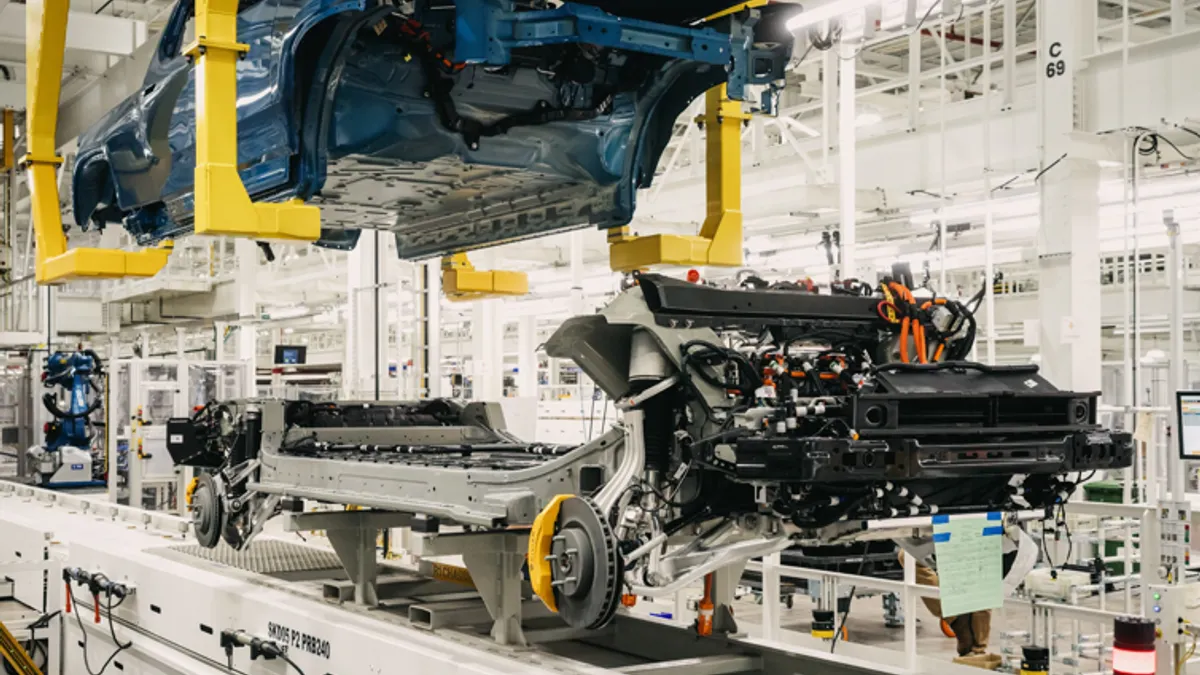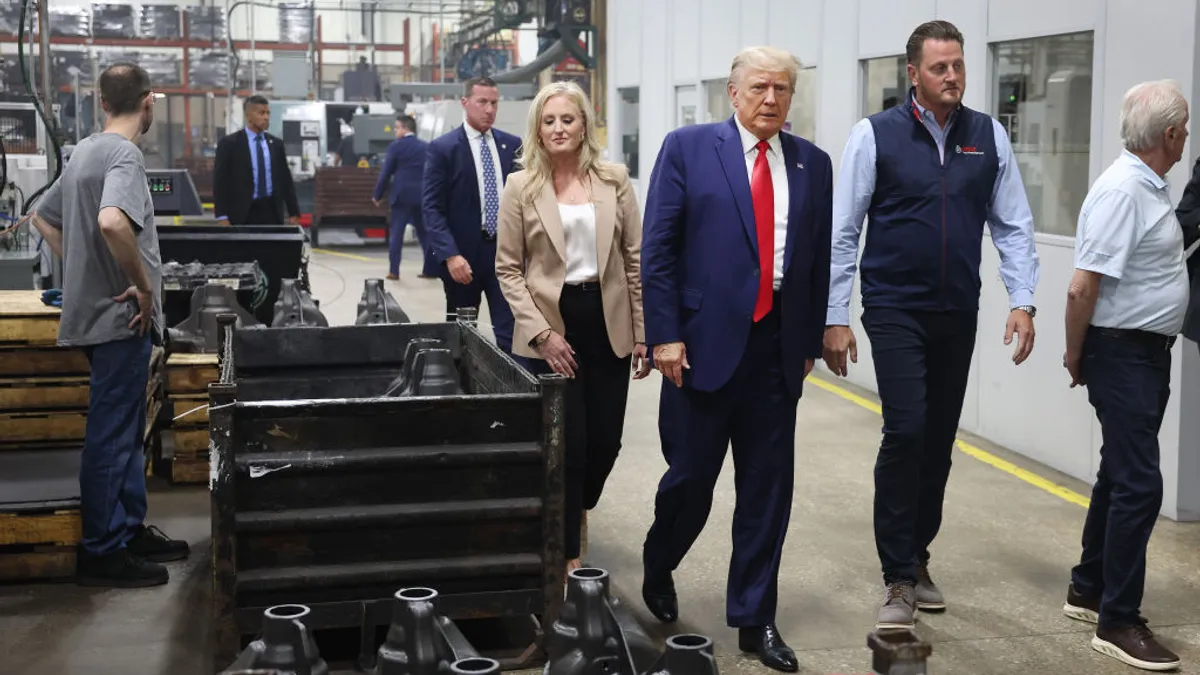Automakers received clarity Tuesday about how they can blunt at least some of the burden of U.S. tariffs on car and part imports.
The Department of Commerce released long-awaited guidance on calculating non-U.S. content of vehicles, per a Federal Register notice, a critical measure for qualifying for reduced duty rates.
Grasping the process is key for automakers to understand whether they can offset some of President Donald Trump’s 25% tariff on cars and auto part imports — later clarified to be only applicable to the non-U.S. content of vehicles compliant under the United States-Mexico-Canada Agreement.
The industry impact of the new guidelines could be substantial, as tariff-related costs could spike by nearly $108 billion in 2025, according to the Center for Automotive Research.
The Commerce Department estimated there are 13 OEMs with automobile operations in Canada and Mexico, with production spanning 54 vehicle model lines, per the notice. Additionally, based on customs data, the federal agency reported there are roughly 200 repeat importers of subject automobiles in 2024.
With U.S.-content eligibility critical for automakers looking to shield costs, how does the submission process work? Here’s what you need to know.
“U.S. content?”
“U.S. content” refers to the value of auto parts entirely obtained, produced or transformed in the United States, according to the “Adjusting Imports of Automobiles and Automobiles Parts” proclamation filed March 26.
The Commerce Department is interpreting “production” using the same definition in the USCMA, which includes the manufacturing, assembling or processing of goods.
The 25% tariff will only be applied to the non-U.S. content of an automobile, which will be calculated by subtracting the value of U.S. content in a car import from the total value, per the federal agency.
Documentation guidelines
To qualify for “preferential” tariff treatment, auto importers must submit documentation to the Secretary of Commerce. Submissions are open as of May 20 and must clarify the type and value of U.S. content in each model line imported into the country.
Each submission should provide documentation certified by a company’s CFO, general counsel or a senior-level officer of equal standing, per the federal agency.
Submissions should include:
- The total declared customs value of an automobile in a model line at the time of import.
- The total value of U.S. content in an automobile, which includes parts completely obtained, produced or substantially transformed in the U.S.
- The total value of non-U.S. content in an automobile, which can be calculated by subtracting the amount of U.S. content from the total vehicle value.
- The vehicle’s production location — which can include more than a single country — and country of final assembly.
- The certification of eligibility for USMCA preference for the submitted model line, which refers to the documents that prove a vehicle meets the trade agreement’s rules.
- The importer name and record number, along with the manufacturer name, facility, country of origin, year, make and model information for every model line included in the submission. Retroactive treatment can be requested, and should include entry numbers for previously imported vehicles.
If any of the customs values vary, the importer can use an average value as long as it’s calculated using the method outlined in the USMCA.
How does the review process work?
The Department of Commerce will analyze each submission to ensure requests are complete and compliant, and may request additional information or clarification, per the guidelines. The importer and U.S. Customs and Border Protection will then be notified of the determination as well as the value of the non-U.S. content in each model line.
The CBP will also receive a list of importers and automobiles authorized by the Commerce Department. The list will include the importer’s name and record number, as well as manufacturing information, such as the country of origin, year, make and model of each authorized automobile.
The Secretary of Commerce can decide to extend the preferred tariff treatment to qualifying vehicle lines imported on or after April 3, per the notice.
If a change in sourcing or production impacts the value of U.S. content, altering eligibility, the department must be informed. Importers must file a new submission to provide such information.
The notice says that eligibility approvals are only valid for six months from the issue date. Importers need to submit new documentation at least 30 days before a current approval expires to maintain eligibility.















